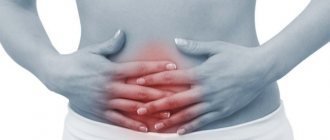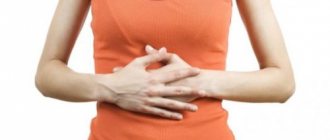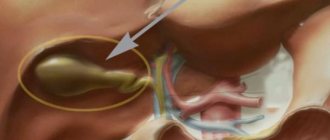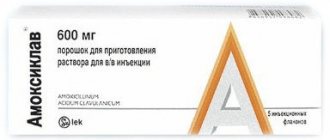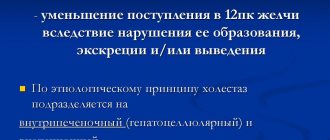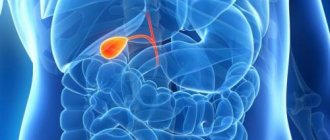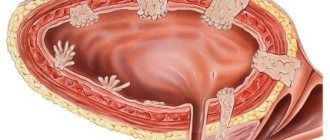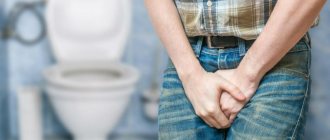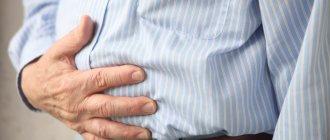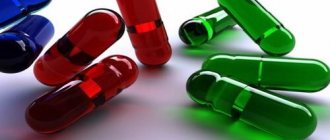Composition of bile
There is a distinction between bladder bile, i.e., that which enters the intestine from the bladder, and hepatic bile. The difference between them is that bladder bile is thicker, since partial absorption of water occurs in the bladder, where bile accumulates in the absence of digestion. Being more concentrated, this bile has a darker color. Hepatic bile is poured into the intestines immediately after formation, without entering the gallbladder; its color is slightly yellow, reminiscent of the color of weak tea.
In addition to water, bile contains bile acids and bile pigments.
Bile pigments include bilirubin and biliverdin.
Human bile contains predominantly bilirubin. Bile pigments are formed from hemoglobin, which is released after the destruction of red blood cells. In addition, bile contains mucin, fats and inorganic salts. The reaction of bile is slightly alkaline.
Diagnostics
The main goal of the diagnostician is to identify the type of gallbladder dyskinesia and identify concomitant diseases that can provoke dysfunction. Ultrasound examination is often used for diagnosis. This method allows you to accurately determine the form of the pathological process and exclude the presence of congenital structural anomalies. The technique helps to examine the gallbladder and determine the degree of its emptying.
The list of indications for ultrasound examination includes:
- pain in the abdominal area of a constant or periodic nature;
- yellowing of the skin and sclera of the eyes;
- the presence of a neoplasm that is palpable on palpation;
- increase in the size of the liver and spleen.
A doctor should decipher the results. If the gallbladder is enlarged in size, a hypertensive form of dyskinesia can be suspected. If the organ is reduced, this is a sign of a hypotonic process or congenital underdevelopment of the gallbladder. Thickening of the walls means cholecystitis. The presence of mobile focal formations - this echo sign indicates the formation of stones. Sediment at the bottom of the organ indicates and confirms the diagnosis of hypomotor dyskinesia of the gallbladder.
Laboratory practices are used to diagnose the pathological process. First of all, the patient is recommended to have a general blood test, but with primary dyskinesia, the results remain unchanged. In the presence of an inflammatory formation, a slight increase in the erythrocyte sedimentation rate is possible, and when infected with parasites, eosinophils and leukocytes increase. A biochemical blood test is valuable for secondary lesions. The diagnosis is confirmed by an increase in bilirubin and amylase. A shift in the leukocyte formula is possible.
X-ray examination methods are used, for example:
- conventional cholecystography;
- infusion cholecystography;
- percutaneous cholangiography;
- transhepatic cholangiography;
- retrograde endoscopic cholangiography;
- duodenal sounding.
The importance of bile in digestion
Under the influence of bile, the action of all enzymes is enhanced: protein, carbohydrate and fat. The effect of lipase, a fat-splitting enzyme, is especially sharply enhanced. Under the influence of bile, the action of lipase increases 15-20 times.
Bile emulsifies fats, that is, it helps fat break down into tiny particles. This breakdown of fat promotes its surface; This creates conditions for better lipase action.
Under the influence of lipase, fat is broken down into glycerol and fatty acids. Glycerol dissolves in water and is easily absorbed, but fatty acids do not dissolve in water and are not absorbed. Bile promotes the dissolution of fatty acids and their absorption. This is achieved by the fact that bile acids combine with fatty acids and form easily soluble compounds.
Since bile has an alkaline reaction, it, together with other intestinal juices, neutralizes the acidic food gruel that comes from the bile into the intestines. Under the influence of bile, intestinal movements increase, which improves the process of movement of food gruel.
Having entered the intestines, bile causes increased secretion of pancreatic juice. Finally, being absorbed into the blood, bile acts on the liver and enhances the formation of bile.
If an excess amount of bile is secreted, some of it is not broken down and is excreted from the intestine.
Etiology
The reasons for the occurrence of such a symptom may differ slightly depending on what age category the patient belongs to.
Thus, in adults, the trigger may be:
- intestinal obstruction;
- obstruction or other damage to the bile ducts;
- severe intoxication of the body with low-quality food or toxic substances;
- cholecystitis or pancreatitis;
- peritonitis and adhesions in the gastrointestinal tract;
- volvulus and Crohn's syndrome;
- irrational use of drugs;
- pyloric stenosis, which can lead to the development of duodenal or gastric ulcers, as well as to the formation of an oncological process. In this case, the most characteristic symptom will be the appearance of vomiting bile in the morning;
- gastritis of any etiology;
- biliary colic and other pathologies of the liver or pancreas;
- extensive burns and radiation sickness;
- illnesses of a psychosomatic nature;
- circulatory disorders in the brain;
- strong emotional stress;
- damage to the oropharynx and pharynx;
- the period of bearing a child - if a woman vomits, and there are bile impurities in the vomit, then this is one of the first signs that she is pregnant;
- abuse of alcoholic beverages.
Formation and secretion of bile
The formation of bile occurs continuously in the liver cells. The bile formed in the cells flows through the bile capillaries and then into the bile ducts into the hepatic ducts and from there, depending on whether digestion occurs or not, it is sent to the gallbladder or through the common bile duct it flows into the duodenum, bypassing the bladder.
The formation of bile occurs under the influence of choleretic substances. A number of substances, entering the blood, enter the liver and, acting on its neuro-glandular apparatus, cause the formation of bile.
Substances that cause the formation of bile are products of protein breakdown - albumoses, peptones, polypeptides. as well as secretin.
The increased formation of bile is caused by the bile itself. Absorbed into the blood, it acts on the neuroglandular apparatus of the liver and enhances its activity. If bile is introduced into the blood of an animal and at the same time the amount of bile released is taken into account, it will turn out that bile formation has sharply increased. The formation of bile is also affected by the entry of acids into the intestines, such as hydrochloric acid, gastric juice, etc.
Bile is also formed under the influence of nerve impulses. When the stomach is full, bile formation increases, which is the result of a reflex effect.
The formation of bile can be enhanced under the influence of the cerebral cortex as a conditioned reflex.
Although bile is produced continuously, it is released into the intestines only when food is ingested.
The common bile duct, which drains into the duodenum, is equipped with a sphincter that opens as food passes from the stomach to the intestine and closes as soon as the last portion of food leaves the duodenum. After the cessation of digestion in the duodenum, the bile produced in the liver is collected in the gallbladder.
Bile secretion begins some time after eating. So, for example, when feeding meat, bile is released after 8 minutes, bread - after 12 minutes, milk - after 3 minutes.
The secretion of bile lasts several hours - throughout the entire digestion process. However, when feeding with different nutrients, the duration of the secretion of bile into the duodenum is different: for example, after eating milk or meat, bile is secreted within 5-7 hours, and after eating bread - within 8-9 hours. Bile secretion is regulated reflexively.
When food enters the intestines, receptors embedded in the intestinal mucosa are irritated. The excitation that arises in them is transmitted to the central nervous system, and from there it travels through the vagus and sympathetic nerves to the sphincters of the gallbladder and bile duct, causing them to open.
The opening of the sphincter is accompanied by contraction of the bladder. As a result, the bile that has accumulated in the gallbladder is squeezed out into the intestines.
The sphincter of the gallbladder closes after emptying, but the sphincter of the common bile duct remains open throughout digestion, and bile continues to flow freely into the duodenum.
Causes and risk factors
Gallbladder dysfunction occurs due to:
- irregularities in meal schedules, irregular meals;
- consumption of fatty foods in excess;
- abuse of harmful foods (chips and crackers, carbonated drinks and chewing gum;
- infection of the body by parasites;
- digestive problems, gastritis and peptic ulcers of the stomach, duodenum;
- acute intoxication of the body;
- intestinal lesions of various types;
- Some medications are taken for a long time.
Often, gallbladder dyskinesia occurs in combination with obesity, food allergies, and diabetes mellitus. These pathologies can serve as the basis for the development of lesions.
In adults
The main causes of dyskinesia are:
- genetic predisposition of the patient to the development of biliary tract disease;
- eating foods high in cholesterol;
- inflammation occurring in the biliary tract;
- presence of excess body weight;
- use of oral contraceptives by women;
- nutrient malabsorption syndrome;
- pregnancy period, especially late stages;
- chronic course of cholecystitis.
The role of bile in digestion
Bile is a digestive juice that is continuously produced during choleresis by liver cells and hepatocytes. Through a system of tubules, it is collected in the gallbladder, accumulated, concentrated, changing its composition, and stored there between meals. During the active digestive phase, cholekinesis occurs - the release of mature gallbladder bile from the bladder into the duodenum (duodenum). Part of the young liver bile enters the digestive tract directly from the liver.
When partially processed food from the stomach enters the duodenum, bile and pancreatic juice also enter here. Bile inactivates pepsin, the main enzyme in gastric juice that breaks down proteins into simple peptides and free amino acids. Pepsin is dangerous for pancreatic enzymes. Therefore, its neutralization promotes a change from gastric digestion to intestinal digestion. Bile acids emulsify fats, increasing their contact area with digestive enzymes. Next, pancreatic lipase begins to actively break down fats.
In addition to its digestive function, bile acts as an absorbent, forming water-soluble complexes of vitamins A, D, E, K and minerals (iron and calcium). The third important function of bile is excretory. Bile promotes the elimination of lecithin, bilirubin, cholesterol, bacterial toxins, medications, heavy metals and bile salts formed during digestion. Bile also plays the role of a digestive regulator: it stimulates the formation and secretion of new portions of bile, enhances the motor and secretory activity of the small intestine.
Where does bile come from?
Bile formation occurs continuously in the liver. The initial or primary (liver) portion is produced by hepatocytes (the main functional cells of the liver) in two ways:
- The leakage of water molecules, glucose, electrolyte ions and other substances from blood vessels into the intrahepatic bile capillaries.
- Active release of bile acids and sodium cations. The former are formed from cholesterol and enter the hepatic ducts, where they combine with glycine and taurine. Further in the intestine, under the influence of microbes, they pass into secondary forms, are absorbed back into the blood and return again to the liver. The typical color of bile is given by the pigment bilirubin, which is obtained from hemoglobin after the breakdown of old red blood cells.
The process of bile formation after hepatocytes continues in the bile capillaries: they produce a second portion of secretion in addition to the primary portion. Ductal epithelial cells secrete water, sodium ions and bicarbonates, and the total amount of bile doubles.
The secretion of liver secretions is stimulated by:
- food (milk, meat, egg yolks);
- hormones of the stomach (gastrin) and duodenum (secretin);
- hydrochloric acid;
- products of protein breakdown and a number of other substances.
Bile acids themselves enhance bile formation after absorption into the blood and return to the liver. This process is also regulated by nerve impulses entering the brain from a stomach full of food.
Mechanism of action of choleretic products
The most common cause of bile stagnation is poor nutrition. Therefore, for the prevention and treatment of this disease, it is recommended to follow a special diet that includes choleretic products. Their mechanism of action is based on stimulating contraction of the gallbladder. Strengthening its motility improves the process of bile outflow and normalizes the process of its excretion into the duodenum, and then into the intestines.
In the morning, after sleep, the gallbladder is most relaxed, the outflow of secretions from it is slowed down and severe stagnation of bile is observed. A proper choleretic breakfast helps make it contract more actively in order to improve outflow.
Relevance of the issue
Sooner or later, a relatively large percentage of the population of our planet thinks about why bile is black, since the stagnation of this organic liquid worries many. Bile is one of the most important fluids present in the human body. Its significance is no less than that of blood, and lymph is no more important. Liquid is responsible for the functioning of the digestive system. Due to it, the rhythm of muscle contractions of the intestinal tract is regulated, that is, peristalsis is stabilized. Thanks to bile, the processes of absorption of essential ingredients are more active. The structure of this substance secreted by internal systems corrects cholesterol metabolism and reactions occurring with the participation of other lipids. The energy supply of the body in general depends on this.
The predominance of black bile is possible in case of stagnation. According to some medical experts, if you can adjust the functioning of your internal organs so that the bile becomes lighter and more fluid and is generated strictly during meals, you can prevent almost all diseases of the digestive tract. A person who does not have problems with the gallbladder and its contents, and is not overweight, will not have excess cholesterol in the body.
Choleretic products
Knowing which foods affect the functioning of the biliary system, you can follow a diet and prevent bile stagnation without the use of medications. Products that stimulate the flow of bile are conventionally divided into several groups.
Vegetable oils
Vegetable fats (sunflower seed oil, flaxseed oil, olive oil, corn oil, etc.) should be present in the daily human diet. They have a beneficial effect on the functioning of the entire digestive tract and stimulate the flow of bile into the duodenum. The most useful vegetable oils are obtained by direct extraction and have not undergone heat treatment. Therefore, they are recommended to be used in food as part of sauces and as a dressing for salads. Taking a few tablespoons of vegetable oil in the morning 30 minutes before meals stimulates the active release of bile.
Fresh vegetables and fruits
Fruits and vegetables are the main components of the daily diet. They are valuable sources of fiber, vitamins and minerals. The list of vegetables that trigger the process of bile formation includes:
- tomatoes;
- all types of cabbage;
- carrots and beets;
- asparagus and artichokes;
- parsley, cilantro, dill;
- rhubarb and spinach;
- olives and black olives.
Fruits that have a positive effect on bile excretion include:
The most useful berries are rowan and lingonberry, both raw and as part of fruit drink, jelly, and compote. It is desirable that the bulk of fruits, berries and vegetables enter the body fresh. A breakfast of freshly squeezed juice and fruit helps the liver work productively throughout the day.
Spices and seasonings
Spices have a positive effect on the production and flow of bile. Therefore, they are used not only to enhance the taste of dishes and give them a special aroma, but also to normalize digestion processes. Cinnamon, chicory, turmeric, and ginger have a pronounced choleretic effect. This group of choleretic products should be used with caution. They can harm those who suffer from liver and gallbladder diseases.
Choleretic drinks
For the normal functioning of all organs and systems, it is necessary to maintain water balance and drink enough fluids. Its lack causes concentration and stagnation of bile. Liquid can enter the body in the form of plain or mineral water, tea, decoctions, compotes, etc. The following have a pronounced choleretic effect:
- hibiscus drink,
- water with lemon juice or apple cider vinegar;
- vegetable juices;
- fruit juices, compotes, jelly;
- vegetable broth from cabbage, carrots, beets;
- water with honey;
- decoctions of calendula flowers, rose hips, ginseng root, barberry berries, corn silk, immortelle flowers, dandelion leaves, wormwood, St. John's wort.
To please the gallbladder and improve its functioning. List of choleretic products
The gallbladder is located on the right side of the human body, just below the liver. This is a relatively small (about the size of a chicken egg), but very important organ. It accumulates and stores bile, which is constantly produced by the liver, but is needed only periodically for our digestion.
© Depositphotos
The body produces from 1 to 1.8 liters of bile per day. This secretion helps the digestion process, increases the activity of pancreatic enzymes, and eliminates excess cholesterol and accumulated toxins from the body.
© Depositphotos
If the production and outflow of bile is impaired, a person suffers from nausea and bloating, he is bothered by flatulence, pain in the right side, belching, constipation or diarrhea. Over time, poor nutrition leads to the development of cholelithiasis; stones form in the gallbladder, blocking its excretory ducts, which can be accompanied by intense pain.
© Depositphotos
Such symptoms require the intervention of a gastroenterologist. However, “So Simple!” knows how to deal with them without pills and IVs! Choleretic foods activate the flow of bile and prevent its stagnation and the formation of stones.
Choleretic products
All choleretic products can be divided into two groups. The first includes those that enhance the formation of bile by the liver (choleretic drugs). The second are those that help remove bile from the gallbladder into the intestines (cholekinetic). Some of the choleretic drugs have both effects: they increase both the production of bile and its secretion.
© Depositphotos
| Sodium (Na+) | 165,0 | 280,0 |
| Potassium (K+) | 5,0 | 15,0 |
| Calcium (Ca 2+ ) | 2,4 — 2,5 | 11,0 — 12,0 |
| Chlorine (Cl−) | ||
| 14,5 — 15,0 | ||
| Hydrocarbonates (HCO3 − ) | 45 — 46 |
- Healthy fats Healthy fats (unsaturated fatty acids) reduce the level of harmful lipids in the body, which means the likelihood of gallstones is reduced.
Vegetable oil (olive, peanut, corn, sunflower, flaxseed) increases the production of a special hormone cholecystokinin, which has a positive effect on the production of bile. - Fruits and vegetables Fresh fruits and vegetables, especially those rich in vitamin C, have a positive effect on the production of bile and prevent the formation of stones in the gallbladder.
© DepositphotosDoctors recommend taking all types of citrus fruits, mountain ash, lingonberries, dried apricots, apples, plums, bananas, strawberries, and figs. You should also pay attention to tomatoes, dill, spinach, celery, carrots, beets, kale, and pumpkin.
Carrots, bell peppers and pumpkin contain carotene, which, when transformed into vitamin A, improves the functioning of the gallbladder. White cabbage and beets have cleansing properties and take an active part in the formation of bile.
© Depositphotos
- Spices There are spices that are recommended by doctors to be taken for gallbladder pathologies. Thus, turmeric can improve the condition of an inflamed gallbladder, accelerate the flow of bile, and relieve pain.
Dry ginger accelerates the flow of digestive secretions. But this spice is contraindicated for serious liver diseases. Cinnamon also has a choleretic effect. Drinking one glass of cinnamon drink daily is enough to feel relief.Chicory leaves and roots have a good choleretic effect. You can just buy coffee with chicory. Drinking peppermint tea also produces a choleretic effect, soothes and relieves spasms.
© Depositphotos
- Bran If your liver or gallbladder has problems, it may be helpful to take bran as a dietary supplement. Bran consists of grain shells and has a high dietary fiber content, which enhances mechanical stimulation of the gastrointestinal tract.
Bran is useful for stool disorders and helps remove harmful substances from the body. They contain vitamins, as well as copper, magnesium, potassium and other trace elements.You can take bran with food or between meals; add it to yogurt, kefir or other dairy products. You should start taking it with 1 teaspoon, the maximum dose per day should not exceed 50 grams.
© Depositphotos
- Coffee Good news for those who cannot imagine life without a morning cup of coffee: the invigorating drink protects you from the appearance of gallstones. Studies have shown that those who drink 4 or more cups of coffee per day have a 45% lower risk of developing gallstones than those who drink coffee occasionally.
Caffeine stimulates the gallbladder to contract, which releases bile. But be careful, coffee only prevents the appearance of gallstones, and if there are already gallstones, then it is better to switch to tea, since drinking coffee can lead to increased pain.In case of chronic cholecystitis, coffee is excluded from the list of acceptable drinks. An exception can be made for weak coffee with milk and only after a meal.
© Depositphotos
- Choleretic drinks To improve the functioning of the gallbladder, healthy drinks made from apple cider vinegar or lemon are recommended. They improve the excretion of bile and should be taken before bedtime.
Choleretic effect present in many vegetable juices (beetroot, cabbage, Jerusalem artichoke, horseradish, black radish). They are included in the treatment menu for gallbladder pathologies. Grape juice has a similar effect on the body.Gastroenterologists recommend making drinks based on honey. It stimulates the secretion of bile and enhances its excretion. To achieve the desired effect, it is recommended to drink the drink daily before bed.
In addition to foods and herbs that have a choleretic effect, the body needs a sufficient amount of fluid for normal bile secretion. Otherwise, the bile may thicken, leading to stagnation. The recommended amount is 1.5–2 liters of water per day.
© Depositphotos
- Herbal mixtures Immortelle, tansy, angelica vulgaris and corn silk perfectly cleanse the liver of toxins, while simultaneously stimulating the secretion of bile.
Pharmacy chains offer choleretic herbal infusions, known under numbers 1, 2 and 3. Their main components are chamomile, immortelle, yarrow, mint, coriander and calendula, which eliminate bile stagnation. However, taking choleretic herbs is permissible only if there are no stones in the gallbladder and bile ducts. Otherwise, you can provoke an attack of hepatic colic. - Breakfast, lunch, dinner should not be plentiful, but moderate.
- The consumption of salt and sugar should be limited as much as possible.
- Choleretic products should be present in the diet every day.
- You can't overeat.
- You need to drink a lot of water (up to 8 glasses a day).
- The amount of animal fats in the diet should be reduced.
- Hot and cold are prohibited. Only warm foods are allowed.
© Depositphotos
Foods that interfere with the flow of bile
Along with a wide selection of choleretic products, there are products that promote stagnation of bile and reduce the motility of the biliary tract. These include rich fish, meat and mushroom broths, animal fats, fried meat, alcohol, smoked, spicy and salty foods, millet, baked goods, peas, mushrooms, nuts, legumes, carbonated drinks.
© Depositphotos
Diet for stagnation of bile in the gallbladder
In order for the gallbladder to always be healthy and in good shape, it is necessary to follow the following rules: normalize liver function, avoid overeating, avoid hypothermia, establish a nutritious and regular diet, and avoid stress.
The state of the gastrointestinal tract is beneficially affected by adherence to sleep and rest, as well as exercise.
https://www.youtube.com/watch?v=-8aXmvT1sbU
A gastroenterologist explains how the digestive system works, what needs to be done for various problems, and which choleretic herbs are best to take if it is not contraindicated.
Any damage to the pancreas leads to serious consequences and long-term, sometimes lifelong treatment. What foods should you include in your diet to avoid putting this vital organ at risk? "So simple!" presents a list of the most important ones.
A healthy diet is a powerful weapon in cancer prevention, capable of preventing 30-40% of all cancer cases. Find out what components it should consist of.
published on kapric.ru according to the materials takprosto.cc
Published by: Inga Proznich
Source: https://kaprizulka.mediasole.ru/chtoby_sdelat_priyatnoe_zhelchnomu_puzyryu_i_naladit_ego_rabotu_spisok_zhelchegonnyh_produktov
Nutrition rules and recommendations
The processes of formation and secretion of bile can be regulated by following simple principles of a healthy diet:
- eat regularly in moderation;
- reduce the amount of sugar and salt in your diet;
- enrich the menu with choleretic products, it is especially important for people prone to stagnation, so that breakfast is choleretic;
- do not overeat;
- reduce the amount of fat consumed;
- drink enough fluids;
- exclude cold and hot foods from the diet.
It is also important to lead an active lifestyle, give up alcohol and smoking, and do not abuse black coffee.
Foods that interfere with the flow of bile
The following products can reduce the formation and outflow of bile:
- animal fats in large quantities;
- freshly baked bread and pastries, flour products;
- concentrated fish broth;
- mushrooms;
- fried foods;
- smoked, salted, spicy dishes;
- coffee;
- carbonated drinks;
- onion and garlic;
- legumes
But you shouldn’t exclude them from your diet. Each product, like a small brick, participates in the construction of our body. With the right balance of foods, it will be strong and healthy. Not all foods that reduce the production and secretion of bile are harmful. Many of them are necessary in small quantities for the body. The main thing is that the diet is properly balanced.
Bile
[1] [2],
bile
[3] (lat. bilis, ancient Greek χολή) - yellow, brown or greenish, very bitter in taste, has a specific odor, secreted by the liver and accumulated in the gall bladder.
What not to do when vomiting bile
During vomiting, it is forbidden to force the patient to drink or rinse the stomach.
If vomiting is caused by intoxication, then it is important for the body to get rid of toxic substances as quickly as possible. Therefore, during an attack of vomiting, it is forbidden to try to stop it. You can stop vomiting only in cases where it becomes uncontrollable and too strong.
In case of intense vomiting, there is no need to give the patient medications orally, since at the first spasms the drug will be eliminated from the stomach along with the vomit.
Important! Incompetent therapy will lead to complications. Treatment begins only after tests have been completed and a diagnosis has been made.
Education:
- Diploma in General Medicine (Medicine and Prevention), Saratov State Medical University (1992)
- Residency in Therapy, Saratov State Medical University (1994)
Often, with diseases of the digestive organs, intoxication of the body with drugs, alcohol or food, vomiting of bile occurs. Such a pathological phenomenon can also appear with a disorder of the central nervous system. Basically, with a reflex eruption of the contents of the stomach through the mouth, harmful toxins and poisons are removed from the body. But brown or green bile with vomiting requires immediate diagnosis and treatment.
General information [ edit | edit code]
Bile is secreted by hepatocytes - liver cells. Bile collects in the bile ducts of the liver, and from there, through the common bile duct, it enters the gallbladder and the duodenum, where it participates in the digestive processes. The gallbladder acts as a reservoir, the use of which allows the duodenum to be supplied with the maximum amount of bile during the active digestive phase, when the intestine is filled with food partially digested in the stomach.
Bile secreted by the liver (part of it goes directly to the duodenum) is called “hepatic” (or “young”), and bile secreted by the gallbladder is called “vesical” (or “mature”).
The human liver secretes up to 2 liters of bile per day [4].
General characteristics of hepatic and cystic bile
[5]
| Options | Hepatic bile | Bile bile |
| Acidity, pH | 7,3 — 8,2 | 6,5 — 6,8 |
| Specific gravity | 1,01 — 1,02 | 1,02 — 1,048 |
| Dry residue, g/l | 26,0 | 133,5 |
| Water, % | 95 — 97 | 80 — 86 |
What is bile made of?
All the main components of bile are secreted in the body. There are differences in the composition of primary (liver) and secondary (vesical) bile.
Primary bile secreted by hepatocytes consists of 97% water, and the rest is the remainder of dry substances, containing on average:
- about 36 mmol/liter of bile acids - this is the main ingredient that gives bile its special properties;
- about 170 mmol/liter of sodium, calcium, potassium cations;
- approximately 135 mmol/liter of chlorine anions, bicarbonates, phosphates;
- about 3 mmol/liter cholesterol (cholesterol);
- approximately 2 mmol/liter of bile pigments (bilirubin and its metabolite biliverdin), mucin and lecithin.
Liver bile externally looks like a transparent straw-colored liquid with a golden tint, which has an alkaline reaction (pH about 8.2).
Composition of human bile [edit | edit code]
The main component of bile is bile acids (67% if we exclude water from consideration). Half are primary bile acids: cholic and chenodeoxycholic, the rest are secondary: deoxycholic, lithocholic, allocholic and ursodeoxycholic acids.
All bile acids are derivatives of cholanic acid. Primary bile acids are formed in hepatocytes - chenodeoxycholic and cholic. After the release of bile into the intestine under the action of microbial enzymes, secondary bile acids are obtained from primary bile acids. They are absorbed in the intestine, enter the liver with the blood of the portal vein, and then into the bile.
Bile acids in bile are in the form of conjugates (compounds) with glycine and taurine: glycocholic, glycochenodeoxycholic, taurocholic and other so-called paired acids
.
Bile contains significant amounts of sodium and potassium ions, causing it to be alkaline, and bile acids and their conjugates are sometimes referred to as “bile salts.” Content of some organic substances in hepatic and bladder bile
[5]
| Components | Hepatic, mmol/l | Cystic, mmol/l |
| Bile acids | 35,0 | 310,0 |
| Bile pigments | 0,8 — 1,0 | 3,1 — 3,2 |
| Cholesterol |
3,0
22% of bile is phospholipids. In addition, bile contains proteins (immunoglobulins A and M) - 4.5%, cholesterol - 4%, bilirubin - 0.3%, mucus, organic anions (glutathione and plant steroids), metals (copper, zinc, lead, indium, magnesium, mercury and others), lipophilic xenobiotics. [6]
Description
Choleretic drugs are drugs that enhance bile formation or promote the release of bile into the duodenum.
Bile ( bilis
- lat.,
fel
- eng.) - a secret produced by hepatocytes. Bile production occurs continuously in the body. Bile produced in the liver is secreted into the extrahepatic bile ducts, which collect it into the common bile duct. Excess bile accumulates in the gallbladder, where it is concentrated 4–10 times as a result of the absorption of water by the mucous membrane of the gallbladder. During the digestion process, bile from the gallbladder is released into the duodenum, where it is included in the processes of digestion and absorption of lipids. The flow of bile into the intestines is regulated by neuro-reflex mechanisms. Of the humoral factors in the process of bile secretion, the most important is cholecystokinin (pancreozymin), which is produced by the mucous membrane of the duodenum when gastric contents enter it and stimulates the contraction and emptying of the gallbladder. As it moves through the intestines, the main part of the bile is absorbed through its walls along with nutrients, the rest (about a third) is removed with feces.
The main components of bile are bile acids (BAs) - 67%, about 50% are primary FAs: cholic, chenodeoxycholic (1:1), the remaining 50% are secondary and tertiary FAs: deoxycholic, lithocholic, ursodeoxycholic, sulfolitocholic. The composition of bile also includes phospholipids (22%), proteins (immunoglobulins - 4.5%), cholesterol (4%), bilirubin (0.3%).
According to their chemical structure, FAs are derivatives of cholanic acid and represent the main end product of cholesterol metabolism. Most of the FAs are conjugated to glycine and taurine, which makes them stable at low pH values. Bile acids facilitate the emulsification and absorption of fats, inhibit cholesterol synthesis via a feedback mechanism, and the absorption of fat-soluble vitamins (A, D, E, K) depends on their presence. In addition, bile acids increase the activity of pancreatic enzymes.
Disturbances in the formation or outflow of bile into the duodenum can be of different nature: liver disease, biliary dyskinesia, increased lithogenicity of bile, etc. When choosing a rational choleretic agent, it is necessary to take into account the pharmacodynamics of choleretic drugs.
Depending on the leading mechanism of action, choleretic drugs are divided into two subgroups: drugs that enhance the formation of bile and bile acids ( Choleretica, Cholesecretica
), and agents that promote its release from the gallbladder into the duodenum (
Cholagoga,
or
Cholekinetica
). This division is quite arbitrary, because Most choleretic drugs simultaneously enhance the secretion of bile and facilitate its entry into the intestines.
The mechanism of action of choleretics is due to reflexes from the intestinal mucosa (especially when using drugs containing bile, bile acids, essential oils), as well as their effect on liver exocretion. They increase the amount of secreted bile and the content of cholates in it, increase the osmotic gradient between bile and blood, which enhances the filtration of water and electrolytes into the bile capillaries, accelerate the flow of bile through the bile ducts, reduce the possibility of cholesterol precipitation, that is, they prevent the formation of gallstones, enhance the digestive and motor activity of the small intestine.
Drugs that promote bile secretion may act by stimulating contractions of the gallbladder (cholekinetics) or by relaxing the muscles of the biliary tract and sphincter of Oddi (cholespasmolytics).
Clinical classification of choleretic agents
(see Belousov Yu.B., Moiseev V.S., Lepakhin V.K., 1997)
[* - drugs or additives are marked, the drugs of which do not currently have valid registration in the Russian Federation.]
I. Drugs that stimulate bile formation - choleretics
A. Increasing the secretion of bile and the formation of bile acids (true choleretics):
1) preparations containing bile acids: Allohol, Cholenzym, Vigeratin, dehydrocholic acid (Hologon*) and sodium salt of dehydrocholic acid (Decholin*), Liobil*, etc.;
2) synthetic drugs: hydroxymethylnicotinamide (Nicodin), osalmide (Oxafenamide), cyclovalone (Cyqualon), hymecromone (Odeston, Holonerton*, Cholestil*);
3) preparations of plant origin: sandy immortelle flowers, corn silk, tansy (Tanacehol), rose hips (Holosas), Berberine bisulfate, birch buds, blue cornflower flowers, oregano herb, calamus oil, turpentine oil, peppermint oil, mackerel leaves (Flacumin), Far Eastern lily of the valley herb (Convaflavin), turmeric root (Phebihol*), buckthorn, etc.
B. Drugs that increase the secretion of bile due to the water component (hydrocholeretics): mineral waters, sodium salicylate, valerian preparations.
II. Drugs that stimulate bile secretion
A. Cholekinetics - increase the tone of the gallbladder and reduce the tone of the bile ducts: cholecystokinin*, magnesium sulfate, pituitrin*, choleritin*, barberry preparations, sorbitol, mannitol, xylitol.
B. Cholespasmolytics - cause relaxation of the biliary tract: atropine, platiphylline, methocinium iodide (Metacin), belladonna extract, papaverine, drotaverine (No-shpa), mebeverine (Duspatalin), aminophylline (Eufillin), Olimethine.
I.A.1) Preparations containing bile acids and bile
- these are drugs containing either bile acids themselves, or combined drugs, which, in addition to lyophilized animal bile, may include extracts of medicinal plants, extract of liver tissue, pancreatic tissue and mucous membranes of the small intestine of cattle, activated carbon.
Bile acids, absorbed into the blood, stimulate the bile-forming function of hepatocytes, the unabsorbed part performs a replacement function. In this group, drugs that are bile acids increase the volume of bile to a greater extent, and drugs containing animal bile increase the content of cholates (bile salts) to a greater extent.
I.A.2) Synthetic choleretics
have a pronounced choleretic effect, but do not significantly change the excretion of cholates and phospholipids into bile. After entering hepatocytes from the blood, these drugs are secreted into bile and dissociate, forming organic anions. The high concentration of anions creates an osmotic gradient between bile and blood and causes osmotic filtration of water and electrolytes into the bile capillaries. In addition to choleretic, synthetic choleretics have a number of other effects: antispasmodic (oxaphenamide, hymecromone), hypolipidemic (oxaphenamide), antibacterial (hydroxymethylnicotinamide), anti-inflammatory (cyclovalone), and also suppress the processes of putrefaction and fermentation in the intestines (especially hydroxymethylnicotinamide).
I.A.3) Effect of herbal preparations
associated with the influence of a complex of components included in their composition, incl. such as essential oils, resins, flavones, phytosterols, phytoncides, some vitamins and other substances. Drugs in this group increase the functional capacity of the liver, increase the secretion of bile, increase the content of cholates in bile (for example, immortelle, rose hips, Cholagol), and reduce the viscosity of bile. Along with increasing bile secretion, most herbal remedies in this group increase the tone of the gallbladder while simultaneously relaxing the smooth muscles of the biliary tract and sphincters of Oddi and Lutkens. Choleretic herbal remedies also have a significant effect on other functions of the body - they normalize and stimulate the secretion of the glands of the stomach and pancreas, increase the enzymatic activity of gastric juice, and enhance intestinal motility during atony. They also have antimicrobial (for example, immortelle, tansy, mint), anti-inflammatory (Olimethin, Cholagol, rosehip), diuretic, antimicrobial effects.
Functions [edit | edit code]
Bile performs a whole range of diverse functions, most of which are related to digestion, ensuring the change from gastric digestion to intestinal digestion, eliminating the effect of pepsin, which is dangerous for pancreatic enzymes, and creating favorable conditions for them.
Bile acids contained in bile emulsify fats and participate in micellization, activate the motility of the small intestine, stimulate the production of mucus and gastrointensinal hormones: cholecystokinin and secretin, prevent the adhesion of bacteria and protein aggregates due to interaction with epithelial cells of the biliary tract [7].
Bile is also involved in the excretory function. Cholesterol, bilirubin and a number of other substances cannot be filtered by the kidneys and are excreted from the body through bile. 70% of the cholesterol found in bile is excreted in feces (30% is reabsorbed by the intestines), bilirubin, as well as the metals, steroids, and glutathione listed in the section on the composition of bile [6].
Bile activates kinaseogen, converting it into enteropeptidase, which in turn activates trypsinogen, converting it into trypsin, that is, it activates the enzymes necessary for the digestion of proteins.
Why is bile needed?
Bile performs various and very important functions in the body. They can be combined into groups:
- Participation in digestion. Bile salts emulsify (break down) fat into the smallest particles. After this, the fats are easily exposed to the enzyme lipase from pancreatic juice, dissolved and absorbed.
- Activation of pancreatic enzymes.
- Protective function - bile reduces the acidity of the stomach contents entering the duodenum. This protects the intestinal mucosa from the aggressive effects of gastric acid.
- The removal from the blood of many important end products of the body's vital activity that cannot be filtered by the kidneys: for example, bilirubin, metals, steroids. Most of the cholesterol found in bile is excreted in the feces, while a smaller part (about 10-28%) is absorbed back by the intestines.
- Stimulating the secretion of pancreatic juices, due to which the motility (mobility) of the tract is also enhanced.
- Bactericidal effect - suppressing the growth of pathogenic microflora of the small intestine, preventing bloating and gas formation
Important! Without bile, normal digestion of fatty foods is impossible.
Pathologies [edit | edit code]
Gallstones [ edit | edit code]
Bile unbalanced in composition (so-called lithogenic bile
) may cause the prolapse of some gallstones in the liver, gallbladder, or bile duct. The lithogenic properties of bile can arise as a result of an unbalanced diet with a predominance of animal fats to the detriment of plant fats; neuroendocrine disorders; disorders of fat metabolism with weight gain; infectious or toxic liver damage; physical inactivity. [8]
Steatorrhea [edit | edit code]
In the absence of bile (or lack of bile acids in it), fats cease to be absorbed and are excreted in feces, which instead of the usual brown color become white or gray with a fatty consistency. This condition is called steatorrhea, its consequence is the lack of essential fatty acids, fats and vitamins in the body, as well as pathologies of the lower intestines, which are not adapted to the chyme so saturated with undigested fats.
Reflux gastritis and GERD [edit | edit code]
In pathological duodenogastric and duodenogastroesophageal refluxes, bile in the refluxate enters the stomach and esophagus in noticeable quantities. Long-term exposure to bile acids contained in bile on the gastric mucosa causes dystrophic and necrobiotic changes in the surface epithelium of the stomach and leads to a condition called reflux gastritis. [9] Conjugated bile acids, and, first of all, conjugates with taurine, have a significant damaging effect on the esophageal mucosa at an acidic pH in the esophageal cavity. Unconjugated bile acids, present in the upper digestive tract, mainly in ionized forms, penetrate more easily through the mucous membrane of the esophagus and, as a result, are more toxic at neutral and slightly alkaline pH. Thus, bile entering the esophagus can cause different types of gastroesophageal reflux disease. [10] [11]
What to do if you are vomiting bile
The causes and treatment of bilious vomiting are directly dependent on each other. Before therapy, the patient visits a doctor and undergoes an examination. Mandatory tests include blood donation and ultrasound (biliary tract, liver).
If the vomit is dark in color, the specialist will prescribe an MRI or x-ray. Brown and black vomiting indicates intestinal obstruction, the development of a tumor process, or gastrointestinal bleeding. Having received the examination results, the specialist will make a diagnosis and prescribe treatment.
Important! If there is blood in the vomit, the patient needs urgent treatment with possible surgical intervention.
In order to stop vomiting and eliminate bile poisoning in the body, you need to follow the rules.
- Maintain drinking regime. The body should receive at least 1.5 liters of water per day. Herbal decoctions and infusions of rose hips or a fruit drink made from sour berries will help eliminate bilious belching and nausea.
- Switch to fractional meals. Food is taken every 3 hours in small portions.
- Review your diet. In case of vomiting with bile and diarrhea in an adult, avoid foods that provoke irritation of the gastric mucosa (citrus fruits, tomatoes, etc.). Do not consume fatty, spicy, smoked, spicy foods, as well as strong tea and coffee, and alcohol.
First aid for vomiting is provided with antiemetic drugs.
The drug therapy administered depends on the patient’s pathology.
Important! Each drug may have contraindications and side effects. Before use, consult a specialist and carefully read the instructions.
When vomiting with bile splashes, the doctor recommends taking medications.
- Enterosorbents (Stimol, Atoxil). The drug removes toxic substances from the body.
- M-cholinergic receptor blockers. A group of drugs is aimed at reducing the muscle tone of the biliary tract and other gastrointestinal organs. Taking the drug facilitates the movement of food through the gastrointestinal tract and promotes the discharge of bile.
- Benzodiazepine tranquilizers (Betagistine, Metoclopramide). The medicine helps overcome the excitability of vomiting receptors.
- Antibiotics (Azithromycin). The drugs are taken if the reflux of bile into the stomach occurs due to intestinal infections or inflammation.
In case of alcohol poisoning, gastric lavage is done before therapy and only after that sorbents are taken.
Bile research [edit | edit code]
To study bile, the method of fractional (multi-stage) duodenal intubation is used. There are five phases during the procedure:
- Basal secretion of bile, during which the contents of the duodenum and common bile duct are released. Duration 10 - 15 minutes.
- Closed sphincter of Oddi. Duration 3 - 6 minutes.
- Bile discharge portion A. Duration 3 - 5 minutes. During this time, 3 to 5 ml of light brown bile is secreted. It begins with the opening of the sphincter of Oddi and ends with the opening of the sphincter of Lutkens. During phases I and III, bile is secreted at a rate of 1 - 2 ml/min.
- Discharge of gallbladder bile. Portion B. Begins with the opening of the Lutkens sphincter and emptying of the gallbladder, which is accompanied by the appearance of dark olive bile (portion B), and ends with the appearance of amber-yellow bile (portion C). Duration 20 - 30 minutes.
- Hepatic bile secretion. Portion C. The phase begins from the moment the secretion of dark olive bile ceases. Duration 10 - 20 minutes. Serving volume 10 - 30 ml. [12]
Normal bile levels are as follows:
- Basal bile (phases I and III, portion A) should be transparent, have a light straw color, density 1007-1015, and be slightly alkaline.
- Cystic bile (phase IV, portion B) should be transparent, have a dark olive color, density 1016-1035, acidity - 6.5-7.5 pH.
- Liver bile (phase V, portion C) should be transparent, golden in color, density 1007-1011, acidity - 7.5-8.2 pH. [12]
Bile examination
Diagnosis of bile will help show the condition of the bile ducts.
The condition of the biliary tract can be assessed using the results obtained from the study of duodenal contents, during which decompression of the bile ducts is carried out. Diagnosis is carried out only on an empty stomach. The procedure is carried out with a thin probe with a metal olive at the end, 1.5 m long. The probe is immersed into the patient’s gastrointestinal tract in stages, to a certain mark, first in a sitting, then in a lying position. The doctor checks whether the probe has reached the duodenum. Its contents are transparent, green-yellow. The material is collected by suction using a syringe with a volume of 10-20 g.
Biological material mixed with gastric juice cannot be used for bacteriological analysis. Flakes in the sample and an acidic environment indicate incorrect sampling.
The process consists of pumping out the contents of the duodenum into different sterile tubes at intervals of 15 minutes. If you need to take a bile sample directly from the gallbladder, Magnesium sulfate in the form of a solution is administered through a probe. The drug stimulates the contraction of the walls of the gallbladder with the subsequent release of bile from it, a dark brown sample of which is collected in a second tube. The contents of all test tubes are carefully examined in laboratory conditions. Laboratory analysis of samples reveals the presence of pathological processes and their causative agents. In addition, the contractility of the gallbladder is checked.
Return to contents
Normal indicators
Normally, the first sample should be transparent, slightly alkaline, light in color and with a density of no more than 101, contain fatty acids from 17.4 to 52 mmol/l, bilirubin - no more than 0.34. Healthy indicators of gallbladder bile: density - up to 1035, acidity - 7.5 pH. It is transparent, dark green in color, contains FA from 57 to 184.6 mmol/l, bilirubin - up to 8. The liver test is transparent golden, with an acidity of up to 8.2 pH and a density of 1011. The FA content in it is normal 13-57, 2 mmol/l, bilirubin - up to 0.34. There should be no mucus, epithelial cells, cholesterol crystals, or a large number of leukocytes. Healthy bile is inherently sterile.
Patients are referred for bile testing if helminthic infestations are suspected. Among protozoa, Giardia is detected in most cases. Cholelithiasis and bile stagnation are often indicated by elevated cholesterol and excess calcium crystals. The presence of cylindrical epithelial cells indicates an inflammatory process occurring in the gallbladder or duodenum.
Source: InfoPechen.ru
The most interesting:
Effects on bile [edit | edit code]
In medicine, choleretics are used to increase the concentration of bile acids in bile. To stimulate the contractile function of the gallbladder, choleretic drugs are used (for example, herbs such as string, arnica, parsley, rose hips, wormwood). To change the composition of bile acids in bile towards potentially less toxic bile acids, preparations made on the basis of ursodeoxycholic or chenodeoxycholic bile acids are used.
| 14,5 — 15,0 | |
| Hydrocarbonates (HCO3 − ) | 45 — 46 |


